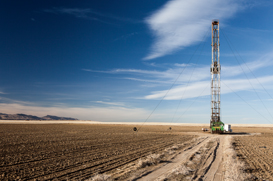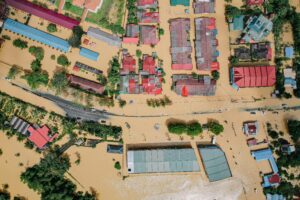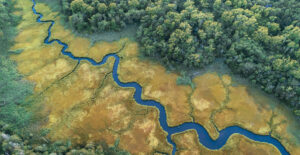Shale Gas and Hydraulic Fracturing – Framing the Water Issue
The emergence of shale gas and shale oil has quickly changed the landscape of opportunities for energy provision and security in different regions of the world. Its extraction method, hydraulic fracturing, is a hotly debated issue due to its potential environmental implications. This SIWI report presents the most recent research in the field and critically assess hydraulic fracturing and its impact on freshwater resources.

Difficulties in assessing the actual quantity of existing global shale hydrocarbon reserves produce opposing views on whether the world is on the verge of a “shale gas revolution” and, if it is, how long it could last. Some argue that shale gas may constitute a backbone of energy supply for specific countries for decades to come, while others say the peak may have passed already.
Despite this, some nations – such as the USA – have already started an ambitious exploitation of this comparatively cheap energy resource, providing new and favourable conditions for domestic energy supplies and costs, and creating new jobs in the booming shale industry. For various reasons other countries have not taken the plunge, despite assessed quantities of shale resources. These reasons include fear of possible severe environmental impacts. These are often associated with shale gas extraction accomplished through the technology known as hydraulic fracturing, or “fracking”; evidence of the impacts is emerging in places where intense, unregulated fracking takes place.
Many of these impacts make themselves felt in water resources. Fracking is a water-intensive activity, and as the reserves are often found in dry areas extraction poses additional challenges in what are often already water-stressed environments. The vast water quantities needed over the life span of a shale gas well, where water is used to fracture rock under high pressure, pile further stress on local fresh water sources which are already needed for many different purposes. At times when water supplies are running short in a specific area it has to be transported to the fracking site from afar.
Water quality is also under threat from fracking as well as the quantity available. Many chemicals used in the fracking fluid (the composition of which is often protected for commercial confidentiality reasons) have increasingly been found to be harmful both to the environment and to human health, yet poor regulations and legislation governing fracking often allow accidents which contaminate surrounding water sources. There is a need for greater responsibility, through developing codes of conduct and regulatory systems governing fracking so as to protect water resources and the environment. It should be adopted by all nations currently exploiting or liable to exploit shale resources as part of their energy supply.
KEY LESSONS LEARNED
– Central and/or local governments engaged in or contemplating shale gas extraction must have clearly defined policies and enforcement strategies in place if the adverse consequences of fracking are to be minimized or avoided.
– The current research gap on possible negative impacts related to fracking must be closed as quickly as possible, to facilitate informed decisions.
– Water quantity and quality impacts must be fully reported, monitored, and regulated.
How to Cite: Hoffman, A., Olsson, G., Lindström, A. 2014. Shale Gas and Hydraulic Fracturing: Framing the Water Issue. Report Nr. 34. SIWI, Stockholm.



